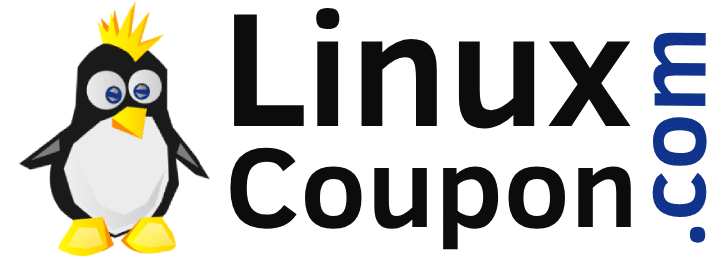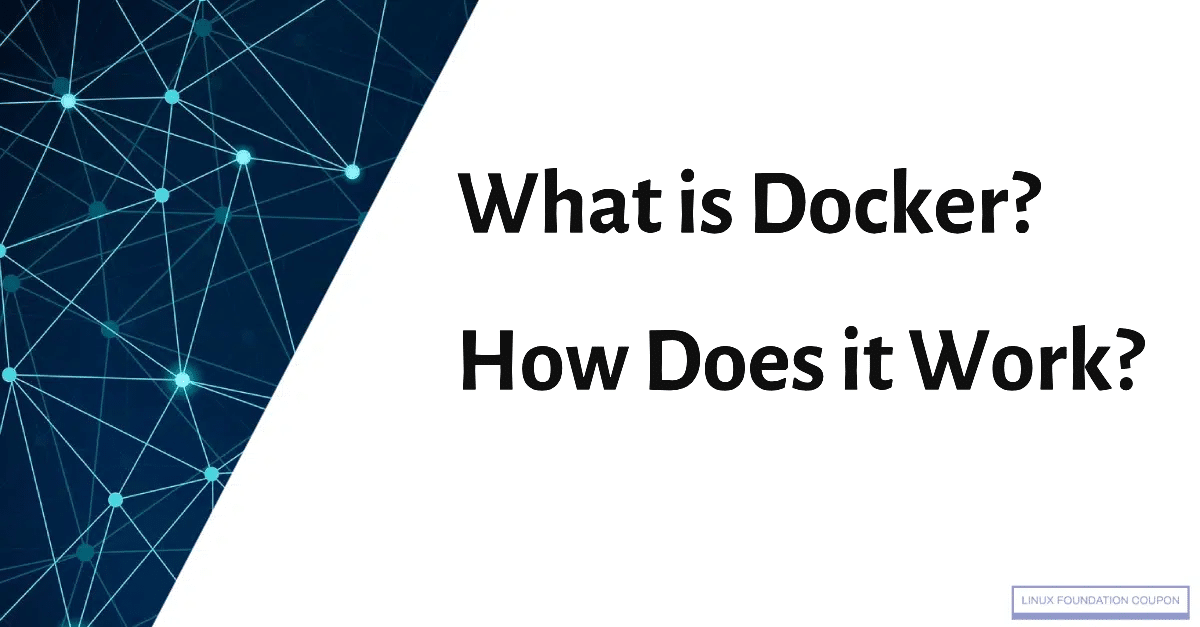What is Docker? How Does it Work? These questions may have come to your mind and in this article, we will find it out.
In this fast-evolving world of software dev & deployment, Docker has emerged as a groundbreaking technology that has revolutionized the way apply packaged, shipped, & run.
In this article, I will discuss deep into the world of Docker, and spread some light on its significance, inner workings, and the multitude of benefits it offers to developers, businesses, & IT operations.
Before we take on this journey, let’s set the stage with an understanding of what Docker truly is.
Table of Contents
ToggleWhat Is Docker? A Paradigm Shift in Containerization
Docker is a stable platform that enables you to develop, deploy, & run applications inside lightweight, portable containers.
Containerd – These Dockers separated its container management component to Containerd in the year 2016.
These containers encapsulate an application along with all its dependencies, libraries, & configs. Docker eliminates the “it works on my machine” confusion by providing a consistent environment across different stages of the software development lifecycle.
You might be thinking about the distinctions between Docker and Linux Containers (LXC), given their apparent similarities in concepts and implementation.
Docker goes beyond being a mere container technology; it encompasses proper wrapper components that set the process of packaging applications. First, to Docker’s emergence, containerization was not the right task.
In its essence, Docker assumes the responsibility of untangling your apps from the infrastructure by bundling all the required system requirements within a container.
To illustrate, consider a Java jar file. With Java installed on a server, you can execute the jar file. In a similar fashion, Docker simply sets this process. Once you’ve assembled a container with the requisite applications using Docker, it becomes executable on any host equipped with Docker.
Running a handful of Docker commands & parameters will swiftly set up and activate these containers.
Difference Between Docker & Container
Docker & containers are terms that are often used interchangeably, but they actually refer to different aspects of the same tech ecosystem.
Let’s delve into the main difference between Docker from containers.
Containers:
Containers are a lightweight & efficient way to package, distribute, and run apps & their dependencies. They encapsulate an app & its runtime environment, including libraries, system tools, & settings, into a single package.
Containers provide isolation bet. The apps, allow them to run consistently across diff. environments.
This isolation is achieved through features provided by the underlying operating system, such as the namespaces & control groups.
Containers offer several key advantages:
- Portability: Containers can run consistently across various environments, from development to testing and production, without compatibility issues.
- Isolation: Each container operates in its own isolated environment, preventing conflicts between applications and ensuring that changes to one container do not affect others.
- Resource Efficiency: Containers share the host system’s kernel, making them lightweight and efficient in terms of resource utilization compared to traditional virtual machines.
- Scalability: Containers can be easily replicated and scaled up or down to meet application demands, facilitating efficient resource utilization.
Docker:
Docker, on the other hand, is a platform & toolset which simplifies the creation, deployment, & management of these containers.
Docker provides a way to package apps & their dependencies into a standardized format called a Docker image.
These images require everything needed to run the apps., such as code, runtime, system tools, libraries, & settings.
Key features of Docker include:
- Docker Engine: This is the core component that enables the creation, management, and execution of containers. It uses containerization technology to provide an isolated runtime environment.
- Docker Hub: A cloud-based registry where Docker images can be stored, shared, and retrieved. It serves as a central repository for Docker images.
- Docker Compose A tool for defining and running multi-container applications. It allows you to define the relationships and configurations between multiple containers in a single file.
- Docker Swarm and Kubernetes: Tools for orchestrating and managing the deployment of containers across clusters of machines, enabling efficient scaling and high availability.
In summary, containers are a technology that enables the isolation & packaging of apps, while Docker is a platform that streamlines the management of containers by giving tools for building, sharing, & it’s deploying containerized applications.
Docker has played a pivotal role in making the famous & standardizing the use of containers in the software development & deployment process.
The Birth of Docker: Origins and Evolution
Docker was originally released in 2013, & was the brainchild of Solomon Hykes. It was built upon the existing Linux containerization tech but introduced a user-friendly interface & toolset, making containers accessible and manageable for devs of all levels.
Over the years, you can see that Docker has evolved, spawning a vibrant ecosystem of tools & services that enhance its capabilities.
Docker always uses the Copy-on-write union file system for its image storage. Therefore, when changes are made to a container, it’s only changes will be written to disk using copy on the write model.
When you use the Copy on write, you will have optimized shared storage layers for all your containers.
1. Docker Images: Building Blocks of Containers
An integral aspect of the Docker is the concept of images. Thinking of a Docker image as a snapshot of a filesystem that contains an application & all its prerequisites.
Images serve as the blueprint for containers, ensuring consistency & reproducibility.
2. Docker Containers: Isolation and Efficiency
Docker containers are instances created from these Docker images. They just offer the process isolation, enabling multiple applications to run on a single host it without interference. Docker’s efficiency shines through these as containers share the host’s OS kernel, consuming fewer resources compared to traditional virtual machines.
3. Docker Hub: A Repository of Images
Docker Hub serves you as a repository for Docker images, allowing developers to share & access pre-built images. All this centralized hub accelerates development by providing a vast collection of images for various software stacks & services.
4. Docker Compose: Orchestrating Complex Applications
Managing multi-container applications can be complex. Docker Compose simplifies this by allowing you to define & manage multi-container applications using a YAML file.
It streamlines the process of spinning up these interconnected services.
5. Docker Swarm and Kubernetes: Scaling and Orchestration
For larger-scale deployments, Docker Swarm & Kubernetes come into play. These orchestration tools automate the deployment, scaling, & management of containers, ensuring high availability and seamless scaling as demand fluctuates.
Advantages of Docker: Empowering Developers and Businesses
1. Consistency Across Environments
Docker’s “build once, run anywhere” philosophy ensures consistency from development to production of all environments. This eliminates compatibility issues & reduces all the chances of deployment-related errors.
2. Rapid Deployment and Scaling
Containers can be started & stopped in milliseconds, enabling rapid deployment & scaling. This agility is particularly advantageous for apps with varying workloads.
3. Resource Efficiency
Docker’s lightweight architecture translates to efficient resource uses. Multiple containers can run on a single host without the overhead of separate OS instances.
4. DevOps Enablement
Docker accelerates the adoption of DevOps practices by fostering collaboration between dev & operations teams. Continuous integration and continuous deployment (CI/CD) pipelines can be seamlessly integrated with all these Dockers.
Getting Started with Docker: A Step-by-Step Guide
Follow these steps to get started with Docker.
Step 1: Installation and Setup
Begin your Docker journey by installing the Docker Desktop or Docker Engine, depending on your OS. Once it’s installed, you can access the Docker CLI, which serves as your command center for managing Docker resources.
Step 2: Creating Your First Docker Image
To create a Docker image, all you’ll need is a Dockerfile—a text file that contains the instructions for building the image. Start by selecting a base image, adding dependencies, & config settings.
Step 3: Building and Running Containers
With your Docker image ready, use the docker build command to build the image. Once built it, you can launch a container using the docker run command. Specify port mappings, volume mounts, & other configurations as needed.
Step 4: Exploring Docker Hub
Docker Hub is a treasure trove of pre-built images. You can explore the hub to find images that match your requirements. Pull images using the docker pull command & experiment with running containers based on these images.
Embracing the Docker Revolution
In a technology landscape where agility, scalability, & efficiency are paramount, Docker has emerged as a game-changer.
Its ability to encapsulate applications, streamline deployment, & enhance collaboration has elevated it to a cornerstone of modern software dev.
As you embark on your Docker journey, do remember that while the concepts may initially seem very complex, the benefits are vast, & the learning curve is rewarding.
So, embrace Docker, explore its intricacies, & unlock a world of great possibilities for your dev. endeavors.
Final Thoughts On Docker
In conclusion, Docker has undeniably reshaped the way software is devs, shipped, & deployed.
Its containerization the very approach, coupled with a robust ecosystem of tools, empowers developers to streamline their workflows & enhance collaboration.
As the software industry continues to evolve, embracing Docker is not just a choice. it’s a strategic move toward more efficient, scalable, & resilient applications.
So, take the leap, dive into Docker, & then witness the transformation it brings to your dev journey.
Frequently Asked Questions
Is Docker a virtual machine?
A Docker is a container self-contained package of software that includes the application itself, along with its necessary dependencies & configuration settings. Unlike all these virtual machines (VMs), Docker containers don’t start their own separate OS. Instead, they operate on the existing host operating system. This functionality is made possible by these container engines.
Kubernetes vs. Docker?
Docker functions as a container runtime, whereas Kubernetes serves as an immense platform designed to operate & oversee containers from a variety of container runtimes. Kubernetes offers compatibility with these multiple container runtimes, encompassing options such as Docker, containers, CRI-O, & any implementation adhering to the Kubernetes CRI (Container Runtime Interface).
Why Docker is used?
Docker is a software platform that enables swift application dev, testing, & deployment. It encapsulates software within standardized entities named containers, this is where encompassing all essentials for the software’s operations, such as libraries, system tools, code, & runtime components.
What is the simple use of Docker?
The very simple use of Docker is to package & run applications in isolated environments called containers. This allows developers to ensure that their applications run consistently across different systems, from development to production. Containers encapsulate all the necessary components such as code, libraries, and settings needed to run the application, making it easy to deploy and manage software in various environments without compatibility issues.
What is Docker used for in DevOps?
Docker is a tool in DevOps that packages applications & their dependencies into isolated containers. It makes sure that the application is consistent & portable Deployment enhances scalability and helps in efficient management. This supports tasks like CI/CD, microservices, and version control, making development & deployment smoother and more reliable.
What are the benefits of using Docker?
Docker provides great benefits like consistent application behavior, isolation of processes, easy portability, efficient resource usage, quick deployment, version control, scalability, support for microservices, integration with DevOps, resource isolation, a strong community, & compatibility with multiple platforms. These advantages enhance development, deployment, & resource management.
What is the main advantage of a Docker container?
The main advantages of Docker containers are Rapid deployment, streamlined instance creation, & swift migrations. Simplified relocation & upkeep of your applications. Enhanced security with reduced code access requirements within containers, along with decreased software dependencies.




